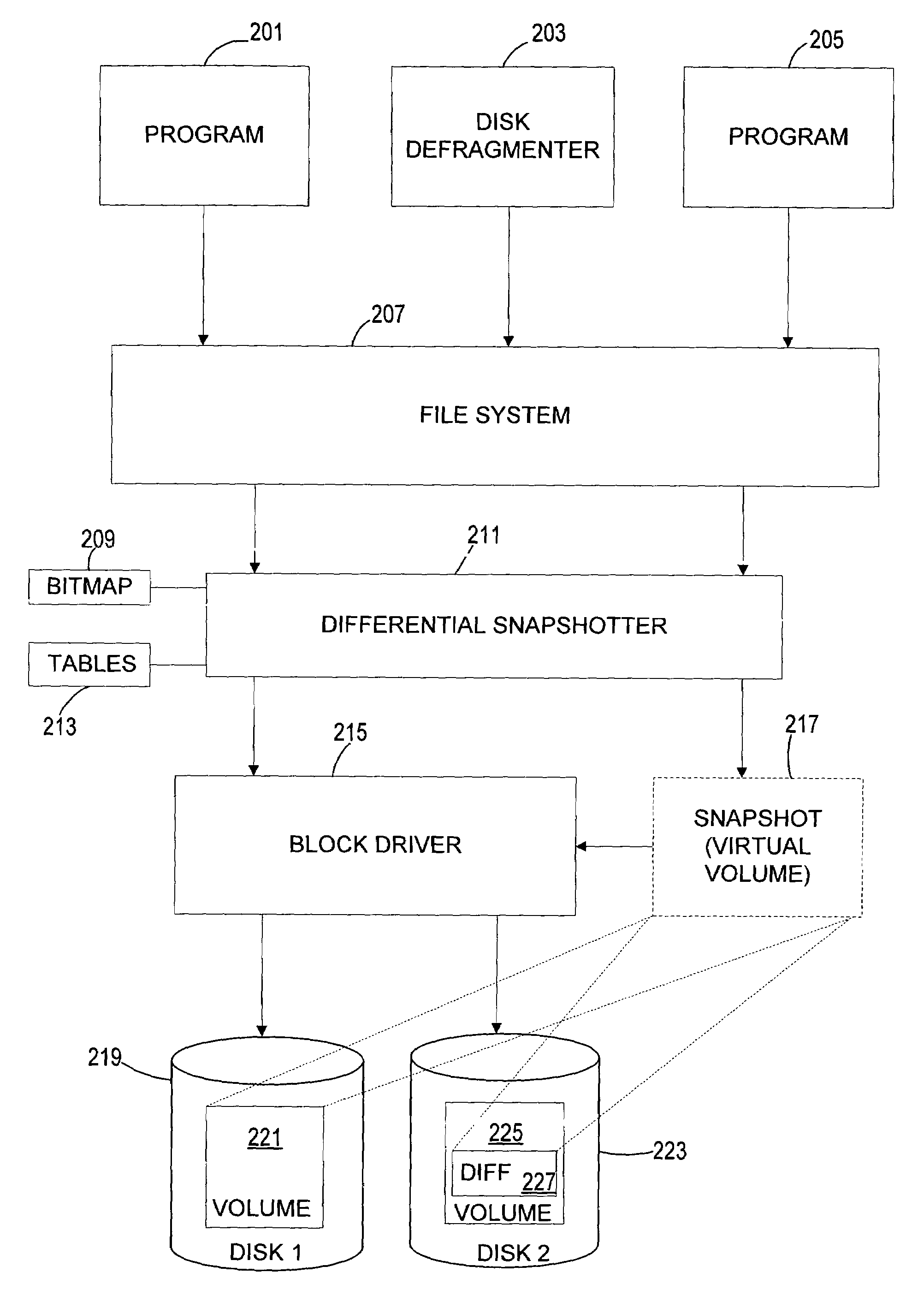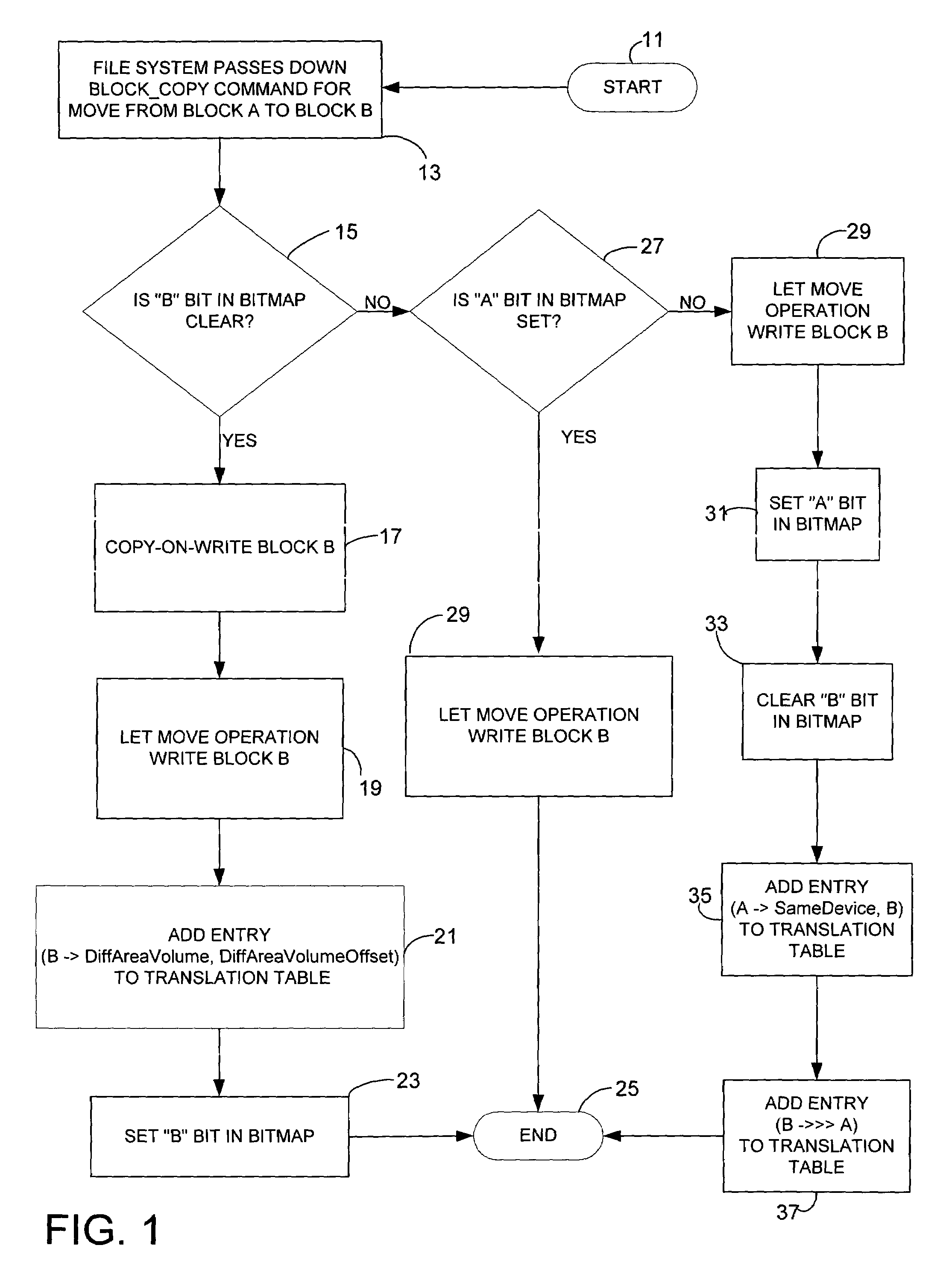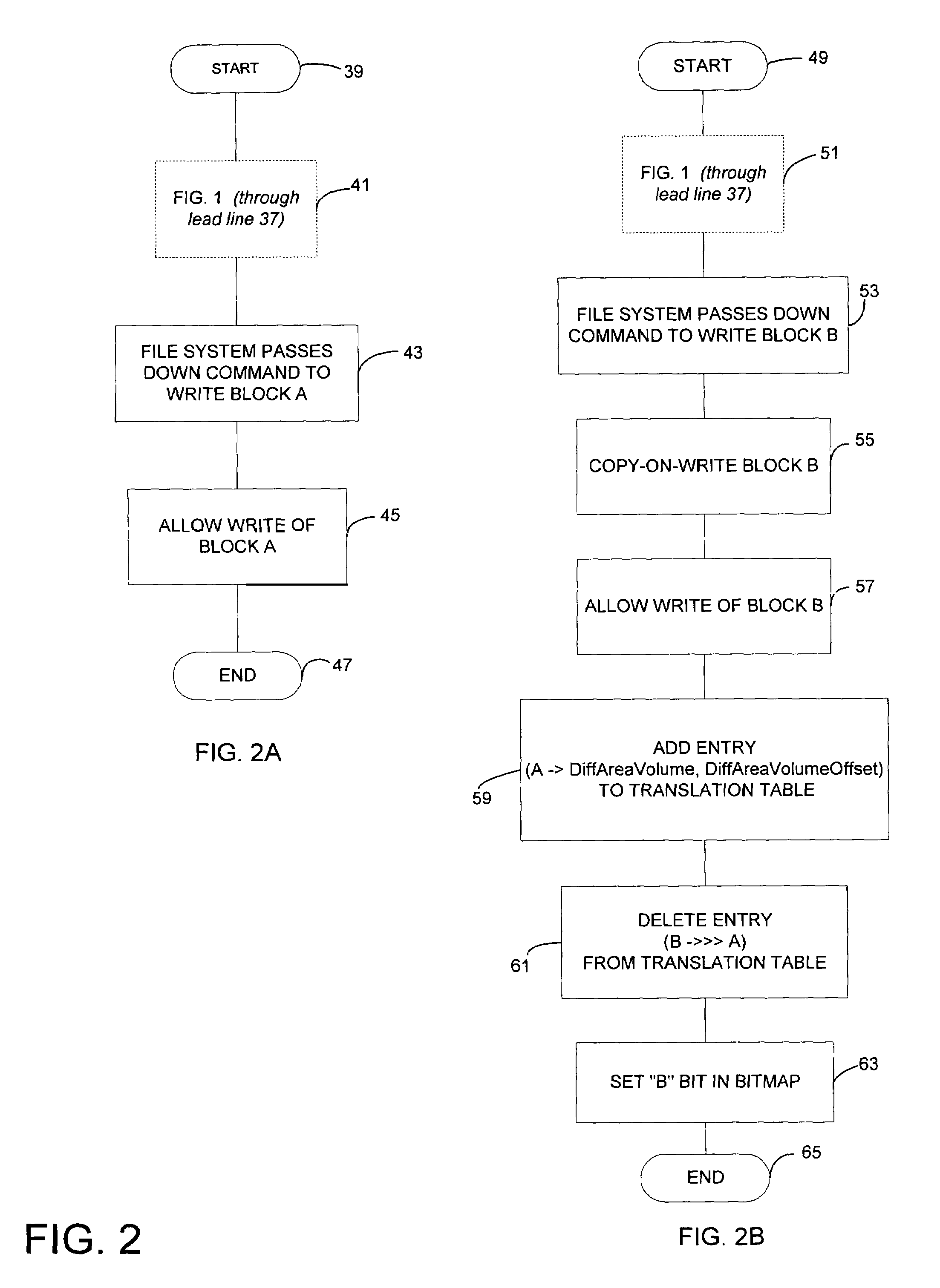Optimizing defragmentation operations in a differential snapshotter
a snapshotter and differential snapshotter technology, applied in the field of data storage, can solve the problems of volume being expected to suffer from increasing external fragmentation, underlying disk hardware failure, user accidental deletion or erroneous modification of files, etc., and achieve the effect of avoiding unnecessary copy-on-write operations
- Summary
- Abstract
- Description
- Claims
- Application Information
AI Technical Summary
Benefits of technology
Problems solved by technology
Method used
Image
Examples
Embodiment Construction
[0027]A differential snapshotter does not have to perform any copy-on-write operations on disk space that was logically unused at the time of the snapshot. This is true because the disk blocks that are free on that snapshot will never need to be read when the snapshotter produces a logical volume file or directory. For this reason, a differential snapshotter may have a bitmap of the blocks on the volume. It may set the bit to one bit value, such as 1, for blocks that are free at the time that the snapshot was taken, and it may set to the same value the bits corresponding to blocks that have already had a copy-on-write since the time of the snapshot. Clearly, only bits that have the other bit value (0 if the first bit value is 1) need to have their blocks copied-on-write. (In the accompanying drawings it is assumed that the first bit value, which may be called an “ignore” value, is 1 and that the second bit value, which may be called a “protect” value, is 0. However, the invention is...
PUM
 Login to View More
Login to View More Abstract
Description
Claims
Application Information
 Login to View More
Login to View More - R&D
- Intellectual Property
- Life Sciences
- Materials
- Tech Scout
- Unparalleled Data Quality
- Higher Quality Content
- 60% Fewer Hallucinations
Browse by: Latest US Patents, China's latest patents, Technical Efficacy Thesaurus, Application Domain, Technology Topic, Popular Technical Reports.
© 2025 PatSnap. All rights reserved.Legal|Privacy policy|Modern Slavery Act Transparency Statement|Sitemap|About US| Contact US: help@patsnap.com



